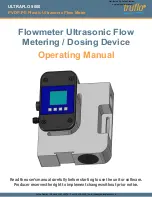
-25-
Working Advice
General Information
The reception lens 14 and the laser beam outlet 15
must not be covered when taking a measurement.
The laser measure must not be moved while taking a
measurement. Therefore, place the laser measure, as
much as possible, against or on a firm stop or support-
ing surface.
Influence on the Measuring Range
The measuring range depends on the light conditions
and the reflection properties of the target surface.
Influence on the Measuring Result
Due to physical effects, faulty measurements cannot
be excluded when measuring on different surfaces
which include:
– Transparent surfaces (e.g., glass, water),
– Reflecting surfaces (e.g., polished metal, glass),
– Porous surfaces (e.g. insulation materials),
– Structured surfaces (e.g., roughcast, natural
stone).
Also, air layers with varying temperatures or indirectly
received reflections can affect the measured value.
Accuracy Check of the Distance Measurement
The accuracy of the distance measurement can be
checked as follows:
- Select a permanent measuring section with a
length of approx. 10 ft to 33 ft (3 m to 10 m); its
length must be precisely known (e.g. the width of
a room or a door opening). The measuring distance
must be indoors; the target surface for the mea-
surement must be smooth and reflect well.
- Measure the distance 10 times in a row.
The deviation of the individual measurements from the
mean value must not exceed ± 5/32” (± 4 mm). Log the
measurements so that you can compare their accuracy
at a later point in time.
2610051599 03-18 GLM42.indd 25
3/23/18 9:52 AM
















































